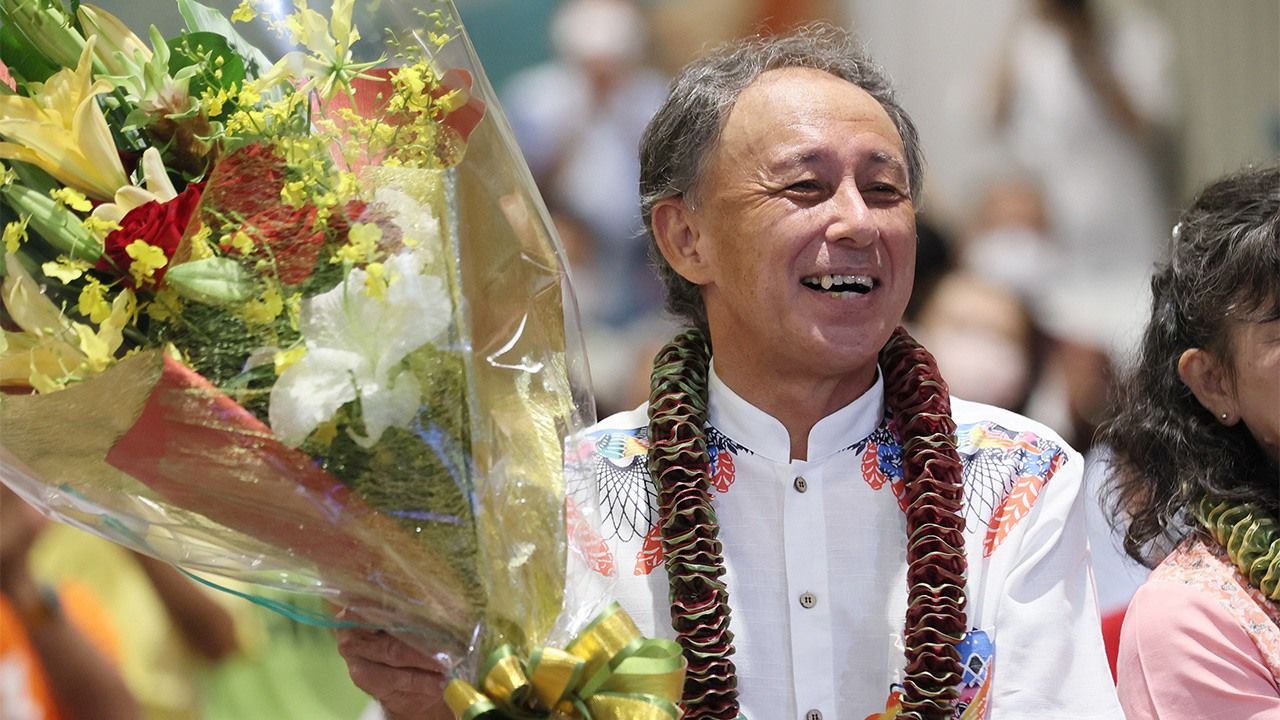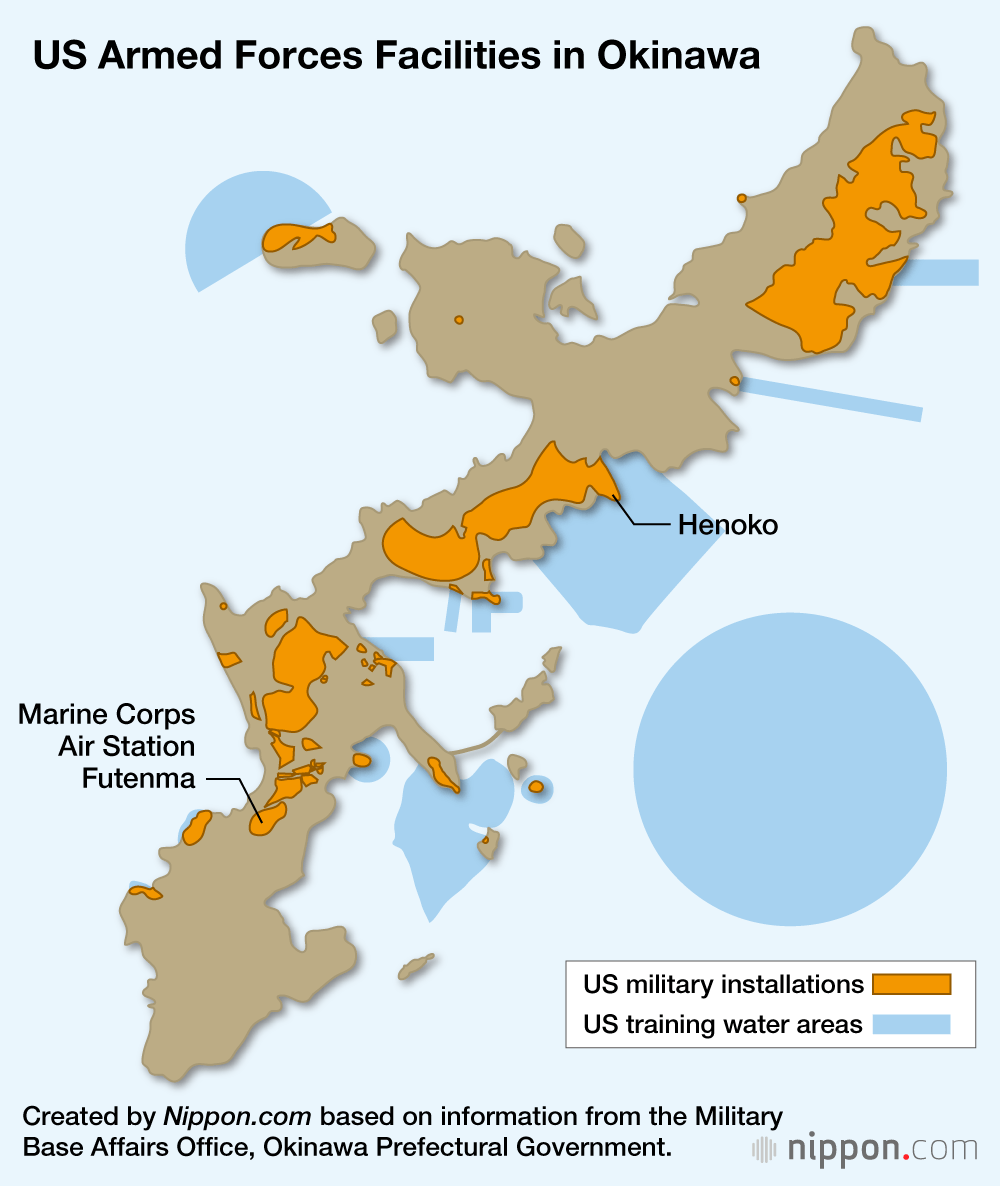
Okinawa Governor Tamaki’s Reelection Prolongs Base Relocation Conflict
Politics Society- English
- 日本語
- 简体字
- 繁體字
- Français
- Español
- العربية
- Русский
The September 2022 Okinawa gubernatorial election centered on the debate over relocating the US Marine Corps Air Station Futenma from Ginowan to the Henoko coastal area of Nago. Incumbent Tamaki Denny, who opposes the relocation, emerged victorious, marking the third consecutive defeat for a candidate backed by the Liberal Democratic Party, following previous losses in 2014 and 2018.
Governor Tamaki remaining in office will prolong the conflict between the prefecture and the national government regarding the relocation of Futenma Air Station. The table below summarizes the history of the controversy surrounding the Futenma base.
Historical Background to the Futenma Base Dispute
| September 2022 | Gubernatorial election: Tamaki Denny reelected as governor of Okinawa Prefecture. |
| August 2022 | Okinawa Prefecture files a lawsuit against the national government for annulling its disapproval of design changes to the base. |
| April 2022 | The Ministry of Land, Infrastructure, Transport, and Tourism annuls Okinawa Prefecture’s disapproval of design changes to the base. |
| February 2022 | Incumbent Toguchi Taketoyo backed by pro-relocation forces wins Nago mayoral election. |
| November 2021 | Okinawa Prefecture rejects the Ministry of Defense’s proposed design changes to the base. |
| April 2020 | The Ministry of Defense submits an application to the prefectural government for design changes to counter the soft ground at the planned construction site. |
| February 2019 | More than 70% of voters oppose the base relocation in a prefectural referendum. |
| September 2018 | Gubernatorial election: Onaga Takeshi’s anointed successor in the anti-base movement Tamaki Denny is elected governor. |
| August 2018 | Governor Onaga dies of pancreatic cancer. |
| July 2018 | Governor Onaga announces he will withdraw permission for landfill work granted by his predecessor. |
| December 2017 | A window frame weighing some 7.7 kilograms falls from a US military transport helicopter assigned to Futenma and lands in the grounds of an elementary school in Ginowan, Okinawa Prefecture. |
| October 2017 | A US military transport helicopter assigned to Futenma crashes and bursts into flame on private land in the village of Higashi. |
| December 2016 | An Osprey aircraft assigned to Futenma crashes off the coast of Nago. |
| November 2014 | Gubernatorial election: Onaga Takeshi defeats Nakaima Hirokazu on a platform of opposition to the relocation plan, and becomes the new governor. |
| December 2013 | Governor Nakaima approves landfill work for the Henoko base. |
| October 2012 | The United States begins deployment of Osprey military aircraft at Futenma. |
| November 2010 | Gubernatorial election: Nakaima is reelected as governor, having changed his stance to opposition to the relocation plan. |
| May 2010 | Prime Minister Hatoyama Yukio abandons the idea of relocation outside the prefecture as Japan and the United States reaffirm commitment to the Henoko plan. |
| July 2009 | DPJ leader Hatoyama Yukio states that a replacement facility should “at least be outside of the prefecture.” In September, Hatoyama is elected as prime minister. |
| November 2006 | Gubernatorial election: Nakaima Hirokazu, who endorses relocation, is elected as governor. |
| August 2004 | A military helicopter crashes into a building at Okinawa International University, Ginowan, near the Futenma base. |
| November 2003 | US Secretary of Defense Donald Rumsfeld reportedly describes Futenma as “the most dangerous base in the world,” after observing it from the air. The base is near the center of Ginowan and surrounded by buildings. |
| November 2002 | Gubernatorial election: Inamine Keiichi is reelected as governor. |
| December 1999 | The cabinet officially approves the relocation plan. |
| November 1999 | Governor Inamine declares Henoko, Nago, as the site for relocation of the facility, which will be for joint military and civilian use. |
| November 1998 | Gubernatorial election: Inamine Keiichi, who favors the plan, defeats Ōta to become the new governor of Okinawa. |
| February 1998 | Okinawa Governor Ōta Masahide announces his opposition to the relocation plan. |
| December 1997 | In a municipal referendum, a majority of voters in Nago express their opposition to the relocation of the Futenma facility to Nago. |
| November 1997 | The government proposes a plan to build a heliport offshore from Henoko in the city of Nago to replace the Futenma base. |
| September 1996 | In a prefectural referendum, 89% of voters, amounting to more than half of the total electorate, agree that the US military presence in Okinawa should be reduced. |
| April 1996 | Prime Minister Hashimoto Ryūtarō and US Ambassador Walter Mondale announce that Marine Corps Air Station Futenma in the city of Ginowan will revert entirely to being Japanese territory. |
| September 1995 | A 12-year-old Okinawan schoolgirl is raped by three US servicemen. In October tens of thousands of Okinawans take part in a protest rally. |
Compiled by Nippon.com based on information from the websites of Okinawa Prefecture, Ginowan, and Nago, as well as various media sources.
(Translated from Japanese. Banner photo: Tamaki Denny celebrates his reelection as Okinawa governor in Naha on September 11, 2022. © Jiji.)
